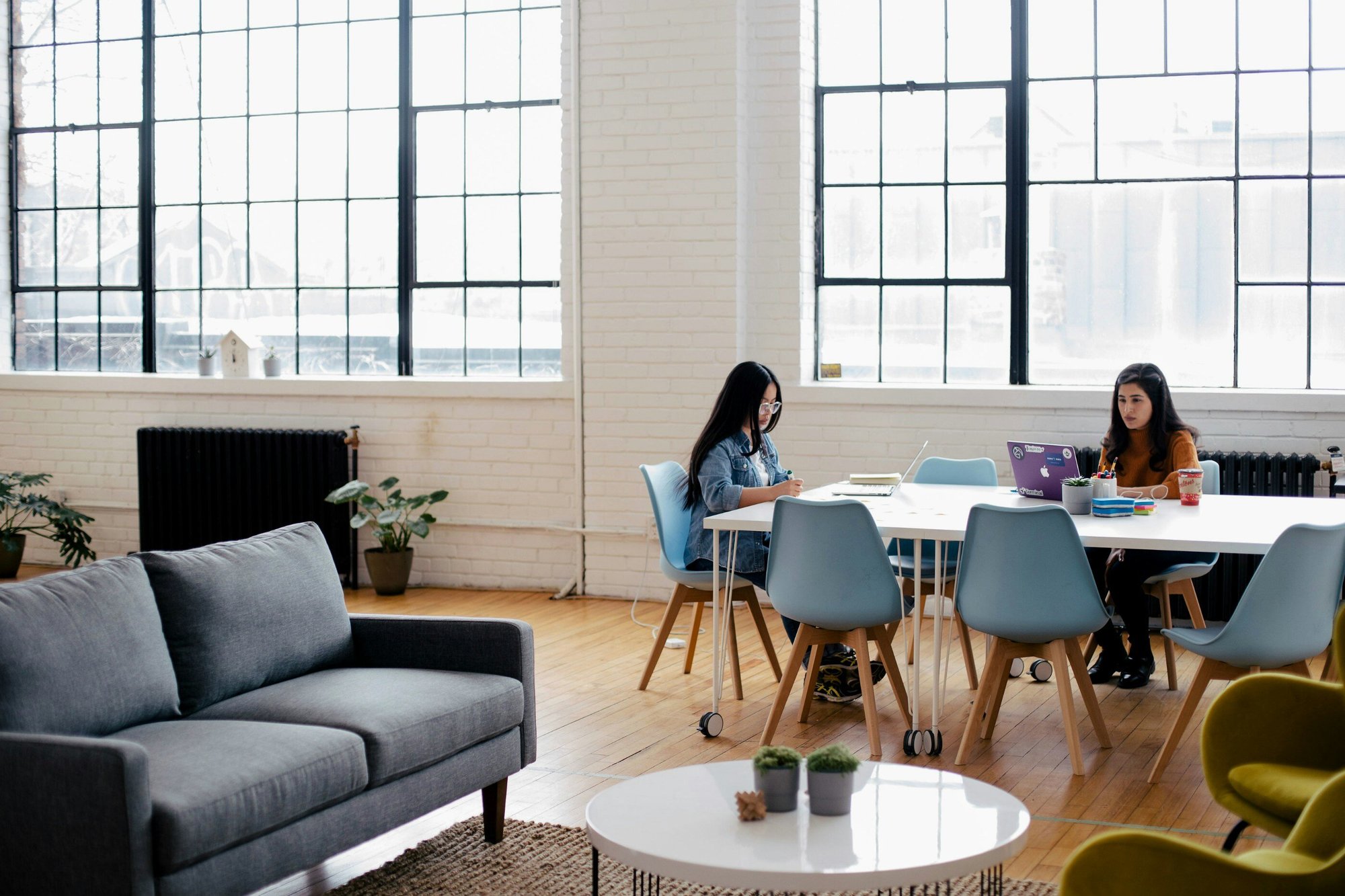Written by
Dec 18, 2024 8:19:49 AM

As the latest commercial offering coming to the Williams Landing Town Centre, Hudson Hub is redefining the suburban office experience by putting employee wellness at the forefront. Designed by renowned architects Hames Sharley, the building is designed to foster an environment that nurtures productivity, creativity, and a sense of work-life balance.
Creating an inspiring and productive office environment goes beyond simply arranging furniture and adding a few plants. A well-designed workspace can boost productivity, enhance employee well-being and reflect your company's values. Here are ten strategic interior design approaches to transform your office space.
Maximise natural light
Natural light isn't just about aesthetics – it's crucial for employee well-being and productivity. Remove heavy window treatments and replace them with adjustable blinds or sheer curtains. Position workstations to take advantage of natural light while avoiding glare on computer screens. If natural light is limited, consider installing full-spectrum LED lighting that mimics daylight. For more tips on ways to maxmise natural light in your office, check out our blog.
Create flexible work zones
Modern offices need to accommodate different work styles and tasks. Design distinct areas for focused individual work, collaborative projects, and casual meetings. Use modular furniture and movable partitions to create adaptable spaces that can evolve with your team's needs. Consider both open-plan areas and private nooks to give employees choice in their work environment.
Incorporate biophilic design
Bringing nature indoors has been proven to reduce stress and increase creativity. Install living walls or add strategically placed plants throughout the office. Choose natural materials like wood and stone for furniture and finishes.
Optimise colour psychology
Colours significantly impact mood and productivity. Use a well-planned colour scheme that aligns with your brand while promoting the desired atmosphere. For example, blues and greens promote focus and tranquility, while yellow accents can stimulate creativity. Avoid overwhelming spaces with bright colours – instead, use them strategically as accents against neutral backgrounds.
Design for acoustic comfort
Poor acoustics can impact concentration and productivity. Implement sound-absorbing solutions like acoustic panels, carpet tiles, and ceiling baffles. Create designated quiet zones for focused work and separate them from collaborative areas. Use sound-masking technology in open spaces to reduce distracting conversations.
Invest in ergonomic furniture
Prioritise employee comfort and health with high-quality ergonomic furniture. Choose adjustable chairs and desks that accommodate different body types and working preferences. Consider standing desk options and ergonomic accessories like monitor arms and keyboard trays.
Establish clear traffic flows
Well-designed circulation paths reduce distractions and improve efficiency. Create wide, unobstructed pathways between different areas of the office. Position frequently used resources like printers and coffee stations thoughtfully to minimise disruption.
Create inspiring break areas
Break rooms should be more than just a place to eat lunch. Design inviting spaces that encourage relaxation and social interaction. Include comfortable seating, good lighting, and engaging design elements. Consider adding recreational features like game tables or comfortable reading nooks to help employees truly disconnect during breaks.
Layer your lighting
Implement a layered lighting strategy that combines ambient, task, and accent lighting. Install adjustable task lighting at workstations to reduce eye strain. Use accent lighting to highlight architectural features and create visual interest. Ensure lighting is glare-free and can be adjusted for different times of day and tasks.
Incorporate brand identity
Your office design should reflect your company's culture and values. Use your brand colours and design elements thoughtfully throughout the space. Create feature walls or environmental graphics that showcase your company's brand. However, balance brand elements within neutral spaces to avoid overwhelming the environment.
A well-designed office environment is an investment in your company's success. By implementing these interior design strategies, you can create a workspace that not only looks professional but also enhances productivity, promotes well-being, and helps attract and retain talent. Remember that the best office designs are those that consider both functionality and aesthetics while remaining flexible enough to adapt to changing needs.
At Hudson Hub, the focus is on creating an exceptional workplace experience that caters to employees' holistic needs, enabling them to thrive both professionally and personally.



